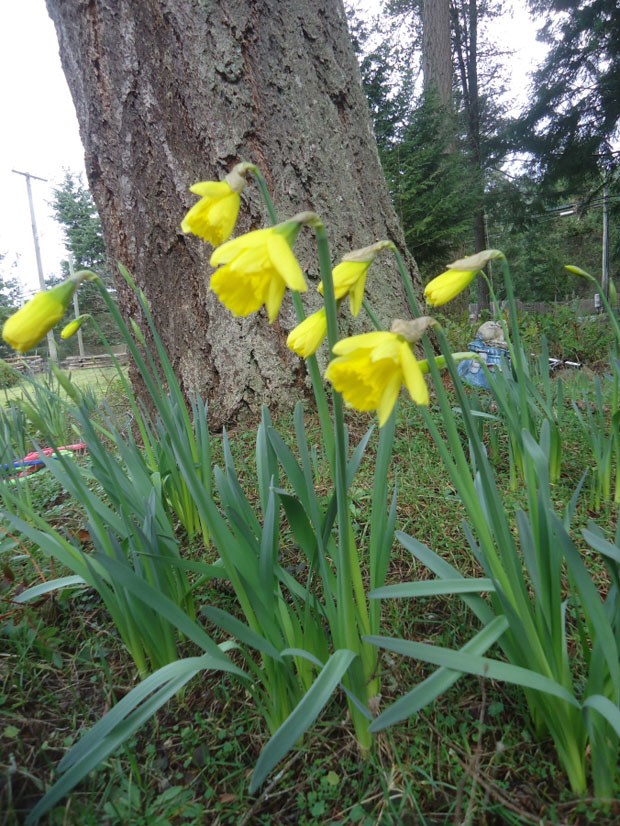Last weekend I travelled to Mayne Island to give a short talk on how to divide perennials. What a great day I had. Not only did I meet so many amazing gardeners but I saw my first daffodil blooms in my friend Linda’s garden. It seems the climate on the island is a lot further ahead than ours.
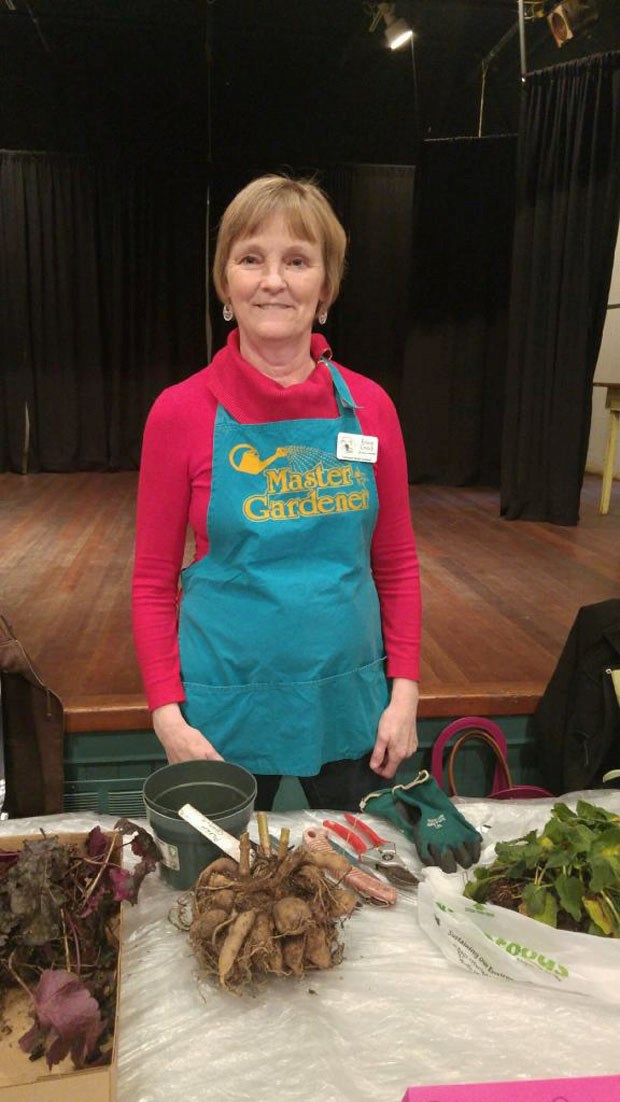
I arrived early and had plenty of time to set up for my talk at the Agricultural hall. I wasn’t the only speaker as they had four other talented speakers on all sorts of topics. As I entered the hall, tables were lined up with seeds donated by community members. You could bring seeds to donate and take whatever seeds you wanted. There was even a plant sharing table which got everyone thinking about spring. Who doesn’t want new plants?
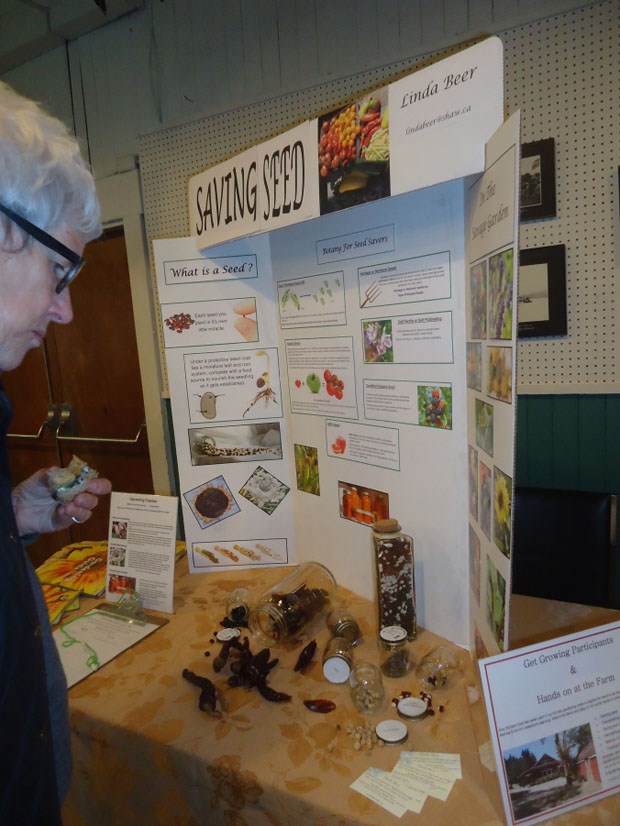
The display tables had so much information. This one was all about saving seeds.
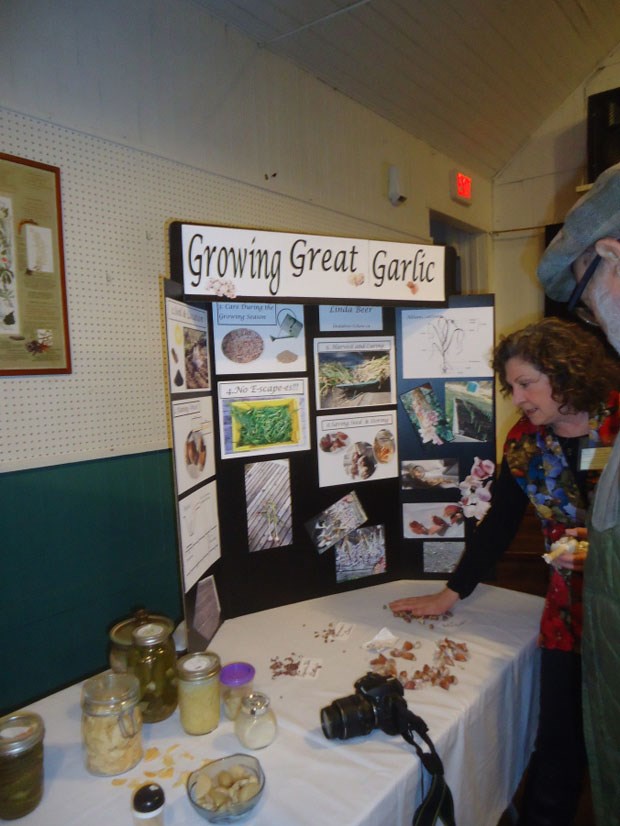
Linda Beer, a resident and master gardener on Mayne Island, gave a wonderful talk on growing garlic. She talked about planting, harvesting and problems with garlic. Did you know elephant garlic is a member of the leek family and regular garlic is from the Allium family?
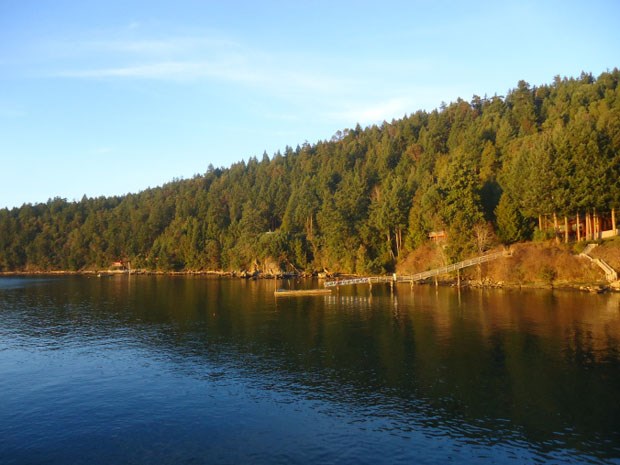
After my talk I was treated to lunch overlooking the water of Mayne Island. What an amazing way to spend a Saturday.
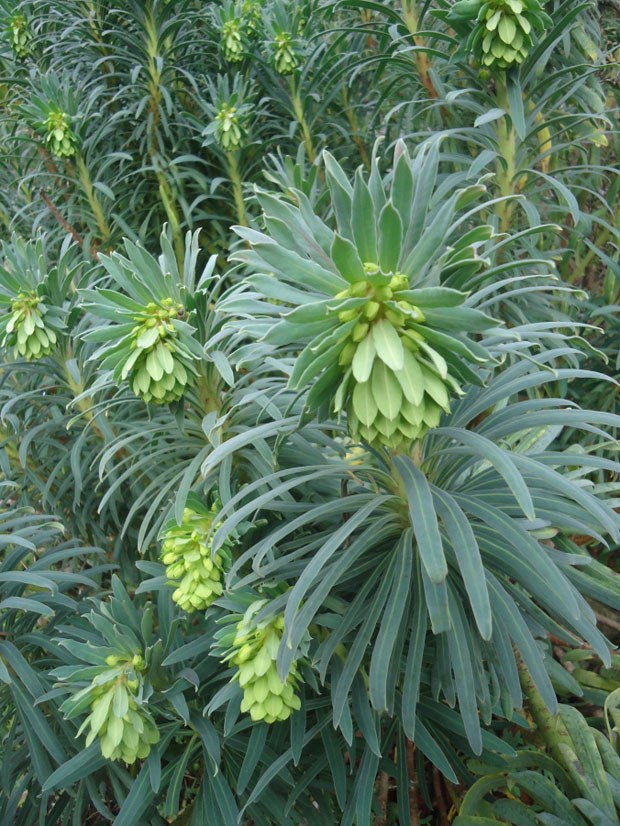
Thanks to Barb who picked me up at the ferry and invited me to see her garden. This Euphorbia was huge! I love the texture this plant adds to the garden. I look forward to returning in May to see it again.
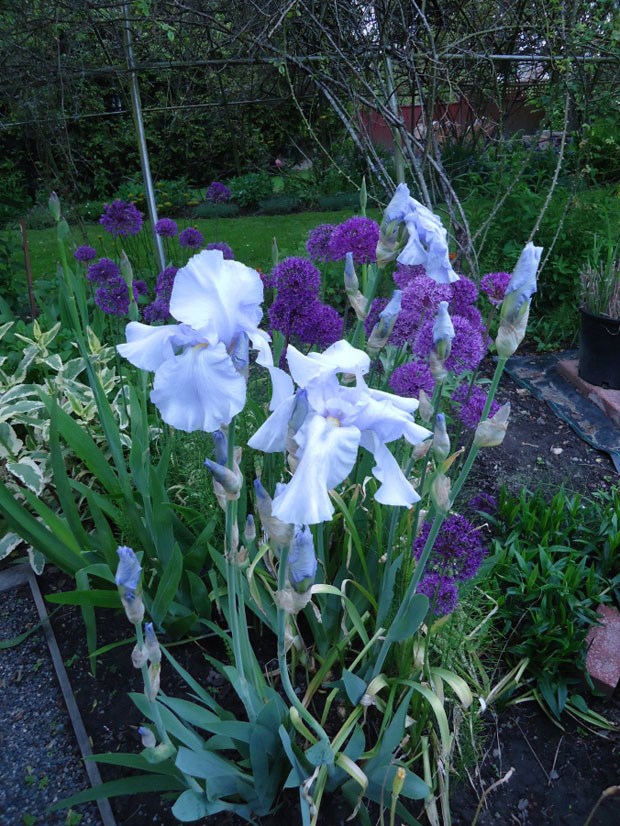
Here is my talk on how to divide perennials for those who missed it.
Why do we need to divide perennials? Dividing is done when clumps start to appear dead in the center, when plants are too vigorous and growing out of bounds or when flower decline is noticed.
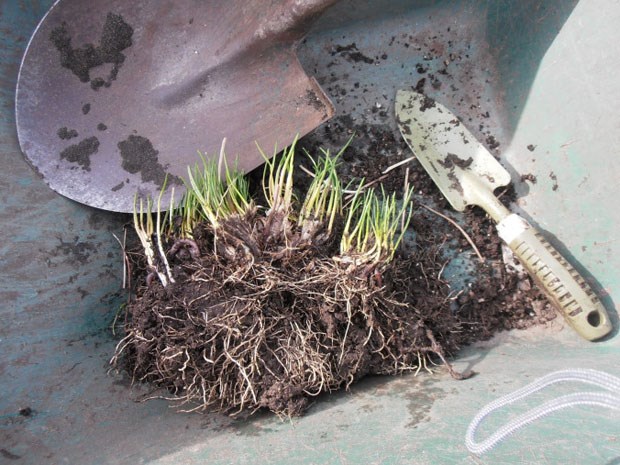
Here I am dividing chives
When is the best time to divide perennials? Spring is the time to divide fall blooming perennials and in the fall divide spring bloomers. You want to divide the plant when it’s not in bloom. That way energy will go into root production. In spring, divide your plants just as their growing tips are emerging from the soil. In fall, wait until September or October to divide perennials.
How do we divide perennials? Be sure to water your plants before you dig them up. This will soften the soil and make it easier to lift them. Have a tarp or table on which to work. I find it easier to see the plants on a tarp. It’s useful to use a spade to divide clumps that are large. I also like to use a pitchfork to lift clumps without damaging them. Dig up the plant you want to divide. Insert the pitchfork at the edges of the root systems which are on the outside of the plant and not near the plant’s crown. Be sure to dig from all sides to make your task easier. Do not be surprised at the weight of the plant as soil is heavy. You may end up dividing your plant on the ground. If you are lifting Hostas or large clumps of daisies they can come with heavy clumps of soil. A pitchfork lets you pry the plant apart. Be tough and use a handsaw or sharp knife to slice through tough root systems. I used one at my talk and people gasped nearby. It won’t kill the plant by sawing it into sections.
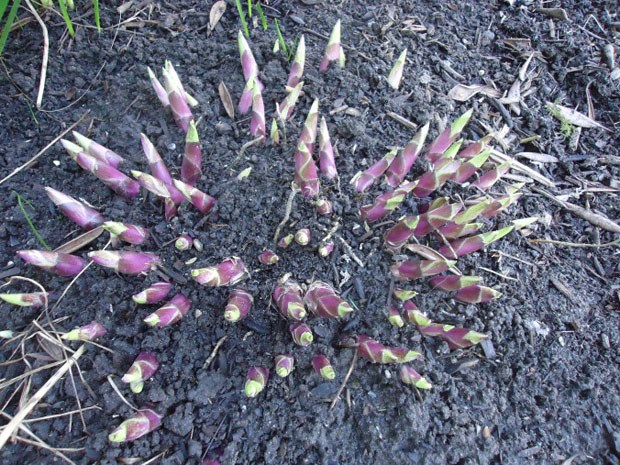
Hosta emerging in spring
It’s very important to prepare new planting holes before you begin to divide your plants. If you do not have room, place your divisions into containers as a temporary home or use them to create a perennial container. Don’t be one of those gardeners wandering around the yard with a plant in hand trying to find a suitable planting spot. Yes, we all do that.
Once the plant is out of the ground carefully pry away any soil that is attached. Watch for weeds as this is the time to get them out. The last thing you want is to move weeds to another part of the garden. I try to remove as much soil as possible. It makes it easier to see where you will be dividing the plant. You can always wash the soil off the roots before replanting.
Let’s take a look at the different root systems:
Spreading root systems are found on plants such as Lambs Ear or Stachys and are easy to divide. Some can be invasive if not divided regularly. With these you need to dig up a clump and replant. What happens with this plant is it tends to die out in the center. You need to replant the outer sections and discard the centre part.
Clumping roots like Hostas have to be cut in quarters and be replanted. Plants like Astilbe, Daylily, Hostas and ornamental grasses fall into this group. Often you need to cut through the crown on the fleshy roots and between the roots and stems to divide the plant. If the plant is hard to divide, use two pitchforks on either side to separate. Keep at least one developing bud with each division.
Rhizome division-These are plants that grow horizontally at or above soil level. Irises fall into this category and are usually divided in August. My Iris have open centers and most of the flowers originate from around the outer edges. This tells me its time to lift and divide them.
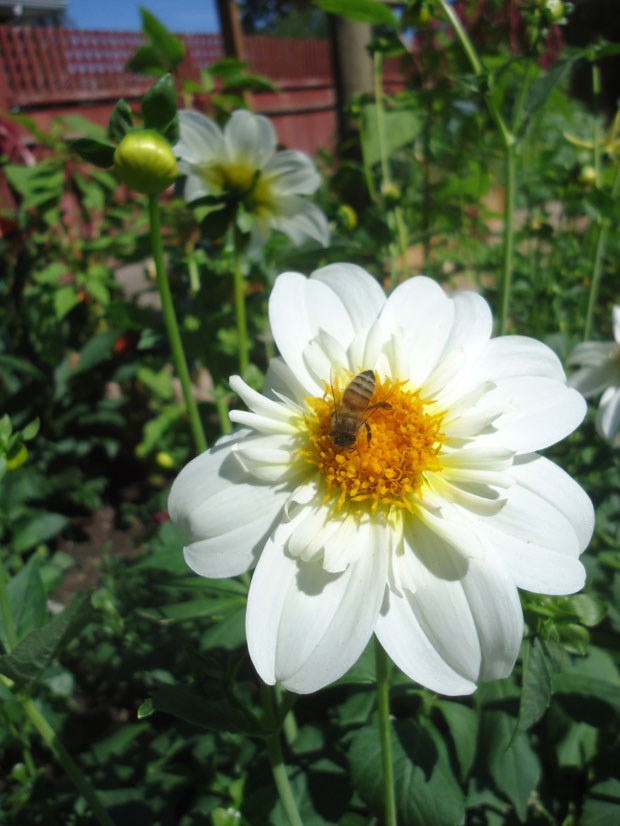
Tuberous roots- Dahlias are a tuberous plant and are cut apart with a sharp knife making sure you have a piece of stem and an eye or growth bud on the division. During my talk I used the Dahlia ‘Alpen Cherub’ above to be divided.
Tough Plants-How many of you have had a plant so tough you dropped it on the ground hoping it would break apart? That’s when I use a saw or knife to cut through the plant. I think my pruning saw is used more for dividing than for pruning.
Some plants are best not divided. Butterfly weed, Euphorbia, poppies, baby’s breath, Japanese anemones, Baptista, Helleborus, Columbines, woody shrubs like Santolina, Baby’s Breath, Lavender, Rosemary and Artemisia fall into this group. These are best left for cuttings or root layering. Some will self sow and produce new plants.
So take a look at your garden. You should see signs of new growth very soon. Take note as to which plants should be divided. If you don’t have room for them, donate them to friends or to plant sales.
